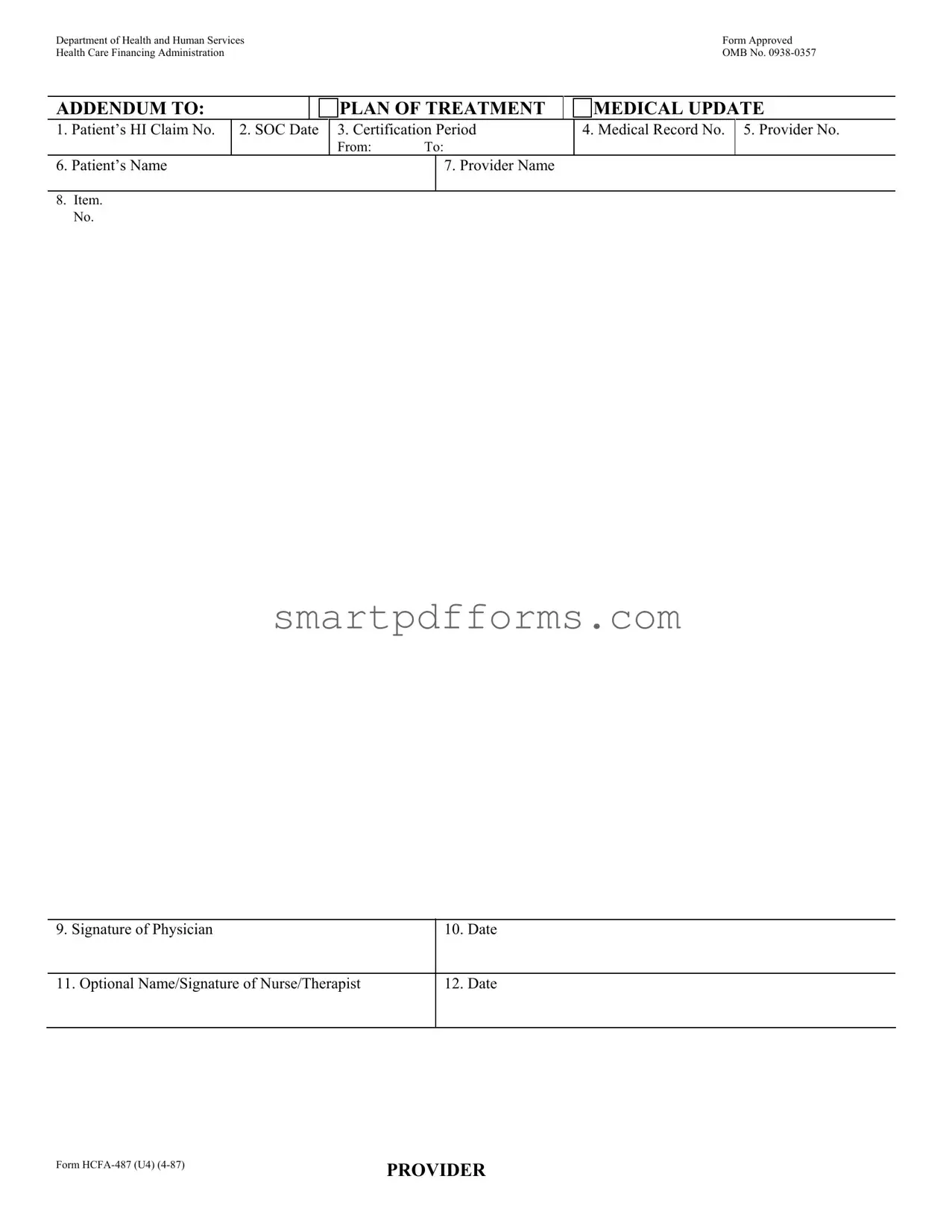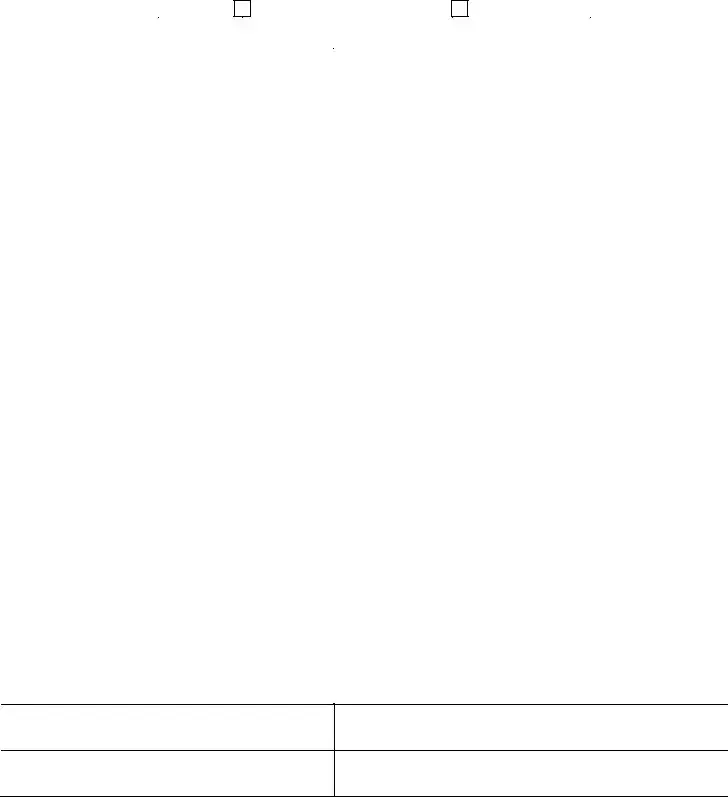Delving into the realm of healthcare documentation, the HCFA-487 form emerges as a critical piece, underpinning the meticulous processes that fuse medical treatment plans with the financial scaffolding provided by health services. Administered by the Department of Health and Human Services, this form carries the stamp of approval from the Health Care Financing Administration, now known as the Centers for Medicare & Medicaid Services (CMS), highlighting its pivotal role in the American healthcare system. The form serves as an addendum to a patient's treatment plan, offering a structured means for updating medical information within a specific certification period. It meticulously records details ranging from the patient's Health Insurance (HI) Claim Number to provider names, alongside the dates marking the start and end of service, underscoring the form's significance in maintaining the continuum of care. Moreover, it garners importance from its requirement for a physician's signature, ensuring that any amendment or medical update adheres to a medically authorized framework. This condensed yet comprehensive form encapsulates the dynamic interaction between care providers and the insurance apparatus, facilitating a fluid exchange of vital healthcare information.

